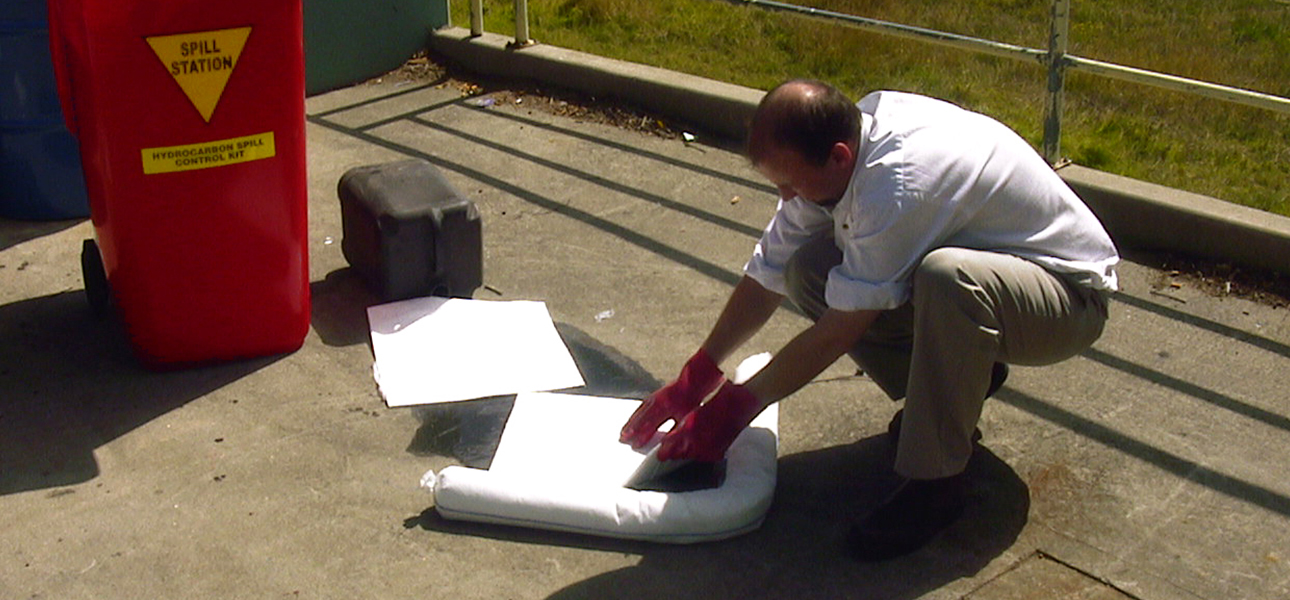There are many instances where you may need to know how to contain a chemical spill or leakage. Not only are there hazardous chemicals and materials in our workplace but some dangerous chemicals are also found in our homes.
In the workplace you should have access to a spill kit and a spill procedure that everyone working in the area is trained on and knows the location of.
If you ever come across a large spill or leakage of a substance that is hazardous or you believe may be hazardous or dangerous there are some steps that you should follow to ensure yourself, others around and the environment remain safe.
As with all workplace activities, the number one priority is personal safety. As any first responder will tell you, if you put yourself in danger the action may result in just adding another person to the casualty list. As a precaution, the safest first step is to evacuate the area.
Evacuating the area ensures that no person can be injured from the spill or anyone who may have already been affected will not sustain further injury. Damage and injury can occur from breathing in the fumes of a spill or having the material come into direct contact with your skin.
If any member of staff has come in contact with the hazardous chemical, remove them to a safety shower and flush the affected area for a minimum of 15 minutes.
The second step is to immediately alert a supervisor or senior person of your workplace and other people in your area. Alerting the relevant people is important to ensure that the correct action is taken. There is no benefit to keeping a spill a secret as this may have later detrimental effects.
The third step is to assess the spill or leakage to determine what you think the substance may be and the overall size of the spill. This is called the spill assessment and will determine your course of action.
This initial assessment will determine whether the spill can be dealt with using onsite resources or if emergency services need to be notified.
AS1940:2017 sets out factors to consider when determining the course of action. Clause 9.4.3 states:
9.4.3 Actions for dealing with leaks and spills
At every occurrence of a leak or spill, the emergency plan should be implemented and consideration should be given to notifying the emergency services.
Emergency services should be notified when :
- the liquids have spread, or have the potential to spread, beyond the boundary of the installation;
- it is beyond the resources of the occupiers to clean up the spill or leak effectively and safely;
- the protective equipment is inadequate for dealing with the situation;
- staff are not experienced in dealing with the situation; or
- staff and the public are, or could potentially be, placed at risk.
If it is determined that the spill can be managed with onsite resources the process can continue as follows.
The first step to responding to a managable spill is to don protective clothing such a gloves, goggles, gowns and boots as stated in the safety data sheet (SDS) of the spilled liquid. The SDS should be found in the chemical register.
Next deactivate or turn off any gas appliances or other ignition sources that may spark the spill.
If the spill is indoors, open windows and external doors to ventilate the space as much as possible, if fume hoods are available deploy these as well.
Using the absorbents within your spill kit, deploy the booms to contain the spill. If you do not have a readily available spill kit, sand or vermiculite may be able to be used as an alternative. Start from the outer edges of the spill of leakage and move inward. Try to avoid any splashing or spreading of the hazardous material.
Once you have stopped the spill from spreading, use absorbent to turn the liquid hazard into a manageable solid.
Once the spill is absorbed and no free liquids are visible, sweep up or collect the contaminated absorbent and put into a leak proof container or suitable contaminated waste bag.
Carefully remove overalls, then gloves, goggles and finally respirator then deposit info a suitable waste container. Wash hands and ensure there is no residual contamination.
Make sure that the waste containers are clearly marked with the name of the spilled substance. Then contact your waste service provider to ensure the waste is deposited into the correct waste stream.
All of the above steps are very important to ensure that each and every spill is adequately contained and cleaned up in the safest and most efficient way.

